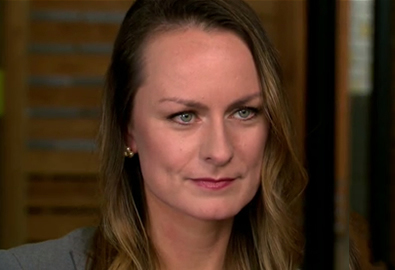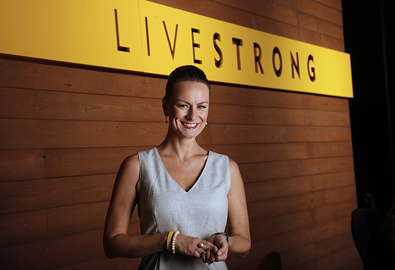Celebrity-led nonprofits don’t have to fight to get their issue highlighted in the news or debated by lawmakers. But fame has a flip side. A revelation that a celebrity founder or high-profile leader has been guilty of sexual misconduct or suffered some other fall from grace can be a death knell for an organization.
Having a star on the marquee means a nonprofit will face intense media scrutiny if bad behavior surfaces. The leader doesn’t have to be super famous, like a Hollywood actor or sports figure with widespread name recognition. A charity leader like Wayne Pacelle, the former head of the Humane Society who left in January after multiple allegations of sexual harassment, isn’t necessarily a household name, but in the animal-welfare movement, he was a rock star. When the allegations came to light, the fallout was intense. Donors threatened to pull their money, and when Pacelle was not immediately fired, several board members resigned.
When a sexual-harassment allegation is not handled properly, donors sometimes flee and the nonprofit tanks.
Take the Kevin Spacey Foundation, a British charity started by the Hollywood icon to support young actors. The foundation was scuttled in February after Spacey was accused of sexual assault and making sexual advances on a minor.
But nonprofits can live on, and even prosper, following allegations of sexual misconduct by a famous leader. We talked to experts in workplace policy and crisis communications who provided this advice on how to respond:
Don’t just set policy, establish a culture.
Nonprofit employees often have a false sense that sexual harassment won’t happen at their organization because charities often fight for a better world. That’s a myth, says Katie Leonberger, president of Community Resource Exchange, a risk-management consulting practice. Anytime a power dynamic exists between employees, there’s a risk of sexual harassment. Add star power to the mix, and the threat only grows.
Many nonprofits assess their risk of governance lapses or financial improprieties. Leonberger advises groups to consider assessing human-resource policies on sexual harassment to make sure all employees know it will not be tolerated and that procedures exist for reporting wrongdoing.
Employees should feel comfortable reporting to their supervisor, or if the supervisor is the problem, that person’s boss. When an executive director is the bad actor, going to the board can be difficult, Leonberger says. “People don’t feel comfortable going to the board, because they often feel the board and the executive director are very close. They don’t feel it is a safe place for them to share their news without retribution.”
Nonprofits should try to determine whom employees can report to in those cases, and that’s not easy to establish, Leonberger says.
To help employees feel they can safely report incidences of sexual harassment, nonprofit leaders need to go beyond simply providing a handbook or policies. They must continually reinforce and educate employees on the rules so they “live and breathe” them, Leonberger says.
“You need to establish a culture of risk engagement,” she says. “Everyone needs to know they have a role to play in identifying and mitigating risk.”
Don’t go into hiding.
If a high-profile leader is accused of harassment, people will find out. Lots of them. Katherine McLane, who was vice president for external affairs for the Livestrong Foundation, the charity founded by disgraced athlete Lance Armstrong, knows what it’s like for a nonprofit when a celebrity founder’s reputation takes a hit. She recommends that organizations resist the urge to “go to the foxholes” by refusing to respond to the allegations.
Consider lowering expectations for fundraising campaigns, but continue communicating with donors and address the current situation in your discussions, she advises.
“A lot of nonprofits want to hit full stop when they see themselves in the news for a reason that’s not of their choosing,” she says. “Imagine you’re a donor who suddenly stops hearing from an organization they’ve supported for years when they’re under the gun. They’re more likely to think they have something to hide or that the crisis must be worse than anyone can imagine.”
Set three priorities.
Nonprofit leaders and board members should assign staff members three primary tasks: managing the group’s reputation, maintaining communications with donors, and keeping employees up to speed on the latest developments. These efforts should be coordinated so that no one group, whether it’s the press, a donor, or an employee, gets blindsided by new developments, McLane says. Nonprofits often misstep by prioritizing one over the others. “It’s really tough to keep your eye on the employee-morale ball when the New York Times is blowing up your email,” she says. “Smart organizations triage media attention, but not at the expense of employee morale and development.”
Build ties with media professionals before a scandal hits.
Use all opportunities to develop a rapport with journalists when your organization is not facing a scandal.
“A lot of good communications directors have relationships with reporters,” McLane says. “If they’ve done their jobs right, those reporters trust them.”
When dealing with the press, speed and coordination are key. You can’t keep the media waiting too long; reporters will think the worst, says Eric Davis, media director at the Institute of American Indian Arts. But it is essential to be as forthcoming as possible and to provide accurate, consistent information.
The college recently changed the name of its Sherman Alexie Scholarship, named for a renowned American Indian novelist, after accusations surfaced alleging he had sexually harassed multiple women.
As the news was breaking, Davis faced an onslaught of calls. It was important for him to get back to each reporter, he says, to let them know the school was on top of the situation and wasn’t trying to hide anything. But before providing any specific information, the school’s leaders, board members, and communications teams had to agree exactly what message to make public.
And it’s important to limit the number of people who are authorized to talk to the press. “Keep the circle small and the message consistent,” he says. “It’s best not to talk until you’re sure about what everyone else is saying.”
Reach out to major donors, too.
Dr. Carmen Puliafito’s name might not ring a bell to many people, but the former University of Southern California medical dean was well-known as an academic leader and fundraiser for the institution. When news emerged that Puliafito, who regularly hobnobbed with celebrities and major donors at fundraisers, was abusing hard drugs and had regularly hired prostitutes, a media frenzy ensued.
Albert Checcio, USC’s senior vice president for advancement, didn’t think Puliafito was a star fundraiser, but he realized that his downfall would attract a lot of attention, first from reporters and ultimately from donors.
He gathered fundraisers quickly and told them the facts about the situation. Then they were told to call up major donors.
Checcio says the “awkward situation” involving the former dean provided an opportunity for fundraisers to get closer to people who write some of the biggest checks. Fundraisers were instructed to speak about the positive things happening on campus. If the donors were curious about Puliafito, they were directed to official university statements on the scandal.
“You don’t want your fundraisers editorializing on the story,” Checcio told the Chronicle in July.
Prevent staff turnover.
“A famous face might be an initial draw, but for most nonprofit employees, who don’t make a ton of money, it isn’t a reason to stay long-term,” says McLane, who also worked on communications strategy for former California Gov. Arnold Schwarzenegger, who admitted in 2003 that he had acted inappropriately toward a number of women during his film career.
For the most part, employees are likely to stay on if they feel the nonprofit keeps them informed, has policies to report and act on workplace harassment, and stays focused on its mission. Nonprofits should make sure all of these elements are in place during good times so if scandal hits, the organization will be better able to survive the bad times.
Don’t try to erase the past.
In February, actor Kevin Spacey’s British charity apparently decided the disgraced actor no longer served as a charity draw and shut down. When Lance Armstrong’s reputation took a dive, Livestrong struggled, but ultimately survived.
When a famous leader messes up, it doesn’t mean that a charity has to stop doing its good work. However, McLane says, it’s impossible to simply erase the contributions a famous founder made.
“We can’t 1984 these kinds of situations,” she says referring to George Orwell’s dystopian novel. “If the organization pretends the famous face is no longer a part of an organization’s history, it would be ridiculous.”
Livestrong found a middle ground by giving a nod to Armstrong as founder on its website but including few other references to him. The landing page has no photos of him in the Tour de France, and the organization’s timeline on its “history” page mentions his name only in passing, to indicate that the charity was founded as the Lance Armstrong Foundation and then changed its name to Livestrong.
Most of the timeline is chock-full of Livestrong accomplishments, including partnerships with medical institutions and news about large gifts the group has received.
The nonprofit acknowledges Armstrong’s role on a low-profile page that includes a statement from him about his retirement and a message from Doug Ulman, who was chief executive in 2012, at the time of Armstrong’s departure. Ulman thanks the cycling pro for his work and lays out plans for the future.
Prepare for a future without this personality.
First, before any hint of scandal, remember that people are fallible. It is possible that your telegenic boss who attracts legions of loyal supporters has an ugly side. And even if he doesn’t, it is always a good idea to consider life without him. Whether your celebrity leader leaves under a cloud of scandal or simply moves on, someday the organization will raise money and push its agenda without him.
When that happens, McLane says, life will be different. There won’t likely be another well-known rainmaker waiting to take charge. “Celebrities usually don’t want to step into the shoes of another famous person,” she says. “They want to blaze their own trail.”
Life can go on for nonprofits, but even before being hit with bad news they need to find stable sources of revenue and focus on promoting their results in society rather than relying on star power to attract gifts. Your mission shouldn’t ride on the popularity of a single person.
Davis, of the Institute of American Indian Arts, says, even though Alexie is an internationally celebrated author, the college’s association with the him was a small part of its broader mission. “I don’t think this leaves us in the lurch,” he says. “This is a big organization, and I don’t think one person can change it.”
Look to the future.
For a lot of people, James Levine was synonymous with the Metropolitan Opera.
Then came his downfall.
In December, when he was serving as artistic director emeritus, Levine was the subject of a New York Times investigative report that chronicled his years of alleged sexual abuse inflicted on young men.
The Met, which did not respond to inquiries from the Chronicle, was criticized for ignoring warnings about Levine and for initially attempting to minimize the allegations.
Since then the opera has sprung into action. After immediately suspending him in March, the Met fired Levine when an investigation found that the sexual-abuse allegations were credible. To fill the void, Levine’s replacement, Yannick Nézet-Séguin, will take the conductor’s baton earlier than expected.
The opera has busily promoted a new season full of favorite singers, including the return of the popular Ring Cycle. And the Neubauer Family Foundation, a longtime supporter, donated $15 million for naming rights to Nézet-Séguin’s position.
McLane says the Met has positioned itself well to prosper.
“They’ve moved on quickly,” she says. “They’ve given the media, donors, and opera fans other things to focus on than James Levine’s departure.”
Seek feedback before making big changes.
Although Livestrong is not as large as it was when it was named for its figurehead Lance Armstrong, it has continued to pull in millions of dollars a year in donations. After a scandal, many charities change the name of a program, department, scholarship, or center. like the Met and the Institute for American Indians Arts did.
Of course, renaming an entire organization is a bigger decision. Don’t rush into it, McLane warns. Do some opinion research with your stakeholders, and possibly the public, to determine how much negative impact the news has had on your reputation. “A big decision like changing your brand has to be informed by data,” she says. “It’s going to require a lot of resources and a lot of effort.
Correction: A previous version of this article misstated the number of Humane Society board members who resigned following allegations of sexual harassment by former CEO Wayne Pacelle.
Originally posted on The Chronicle of Philanthropy


